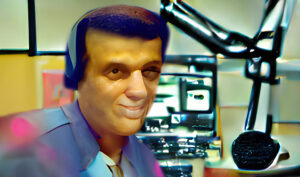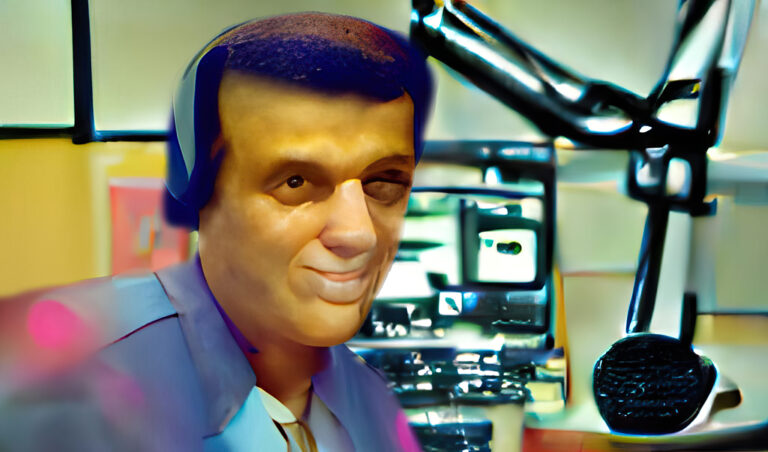With its unusual transition from the printed page to TV screens in the UK, a short series played fast and loose with its source material and became a kind of Luddite travelogue with memorable music.
Filmed entirely on location in 1973, the BBC series The Changes seemed to have a lot going for it. Adapted – though with significant alterations – from a trilogy of young adult novels by Peter Dickinson, The Changes had a great literary pedigree, and being shot entirely on film seemed to promise a much slicker production than the average shot-on-video BBC fare.
The BBC then proceeded to delay its premiere until 1975. It’s just possible that with the UK suffering power cuts and an ongoing series of mining strikes occurring at the time of filming, The Changes threatened to be too topical for immediate release, because The Changes deals with a world that suddenly decides it can do without technology – because technology suddenly seems evil. (The events of the years leading up to the show’s eventual premiere also planted seeds that became other acclaimed telefantasy series – Terry Nation’s Survivors, a story chronicling the aftermath of a deadly global pandemic, premiered mere weeks after The Changes.)

The series’ lead character, Nicky (played by Vicky Williams), is at home with her parents in the first episode when every piece of machinery of technology suddenly seems to emit a piercing sound, and that sound inspires (or possesses?) those who hear it to begin smashing the machines that seem to be causing it. Televisions, cars, radios, everything must be smashed to bits, because that’s what seems to be making that painful noise.
But cities are full of machines. Even with cars flipped over and set ablaze, people flee from their homes and their home towns, just to escape the mere sight of technology. And the electrical wires criss-crossing the country? They’re “bad wires” now – going too near them is to be traumatically reminded of the sound and the insanity it caused. The show’s main character, separated from her parents (who we’re told are fleeing to France), must navigate the rural back roads of England alone, until she encounters a group of traveling Sikhs and joins them. As it turns out, there’s safety in numbers, because with the fall of technologically advanced civilization (at least as we knew it in the early ’70s), who holds the seats of power is up for grabs from town to town, and outsiders like the wandering Sikhs are not a welcome sight. Eventually the source of the Noise must be tracked down…but what or who caused it, and why?

Over the course of ten episodes, the action proceeds at a languid pace, and there are a lot of travel montages – a lot. By the standards of fast-paced modern television, the pacing might seem positively sleepy to some viewers, but it’s a fascinating glimpse into worlds lost to time – both the fictional Luddite world created in the story, and the rural parts of Home Counties England where the show was filmed.
The music can’t be given nearly enough credit for preventing the show from seeming too dull: it’s a magnificent early effort by Paddy Kingsland and the BBC Radiophonic Workshop, who also scored both the radio and TV versions of The Hitchhiker’s Guide To The Galaxy and numerous early ’80s Doctor Who stories (including Tom Baker’s swan song and Peter Davison’s introductiory story). Kingsland’s knack for almost-hummable melodies, and exploring variations on those melodies, is put to grand use here, but it’s played not just by the synthesizer-centric Radiophonic Workshop, but by added players on real percussion, sitars, and a small brass section – a unique sound that resulted in a soundtrack that stayed so in demand that it was issued as a digital download in 2018, as well as a double LP for that year’s Record Store Day. (It helps, if you want to be reminded of a show about the end of human reliance on technology, if you’ve kept your turntable in good working order instead of smashing it to bits.)

The Changes may well be one of those shows (like its contemporary on rival network ITV, Sky, which we’ve covered before) that succeeds as an exercise in style and atmospere over storytelling substance. But that may be due to the three books on which the series was based: Dickinson’s young adult novels actually chronicled the events from the perspective of a different character in each book, and perhaps even more confoundingly, the books were written and published in the exact opposite of chronological order. The series depicts meetings between characters who never interacted in the original novels. By the time the three novels – The Devil’s Children, Heartsease, and The Weathermonger – were transformed into a television event, they had very much become their own entity. (Ironically, the three books are now available as “The Changes Trilogy” – an indication, perhaps, that the TV series overtook the books in popularity.) The unusual focus on the Sikhs as sympathetic characters, shunning the tendency of other ’70s TV to cast members of that faith in a far more unsavory light, has won The Changes acclaim both at the time of its broadcast and in the decades since. It was also a career-maker for a least some of the people involved in making it: Anna Horne went on to oversee many other children’s TV productions, including the unusual late ’80s alternate-history series Knights Of God (which we’ve also discussed here).

Those who were kids when The Changes was first broadcast in early 1975 often cite it as a “flashpoint memory” of TV – it made quite an impression on its intended audience, and the British Film Institute gave the series its premiere on DVD in the 21st century. Even with the passage of time, however, The Changes has a certain strange power to it. The sense of foreboding is almost a character unto itself; with no helpful parents around, our main characters really are on their own and, at the hands of adults who have their own agendas, often seem to be in real danger. There’s really been nothing quite like it before or since – an unnerving beginning-of-the-apocalypse tale that manages, on a tight budget, to create an utterly engrossing world.
Naturally, you can find a complete guide to this series at the author’s site, theLogBook.com.




+ There are no comments
Add yours